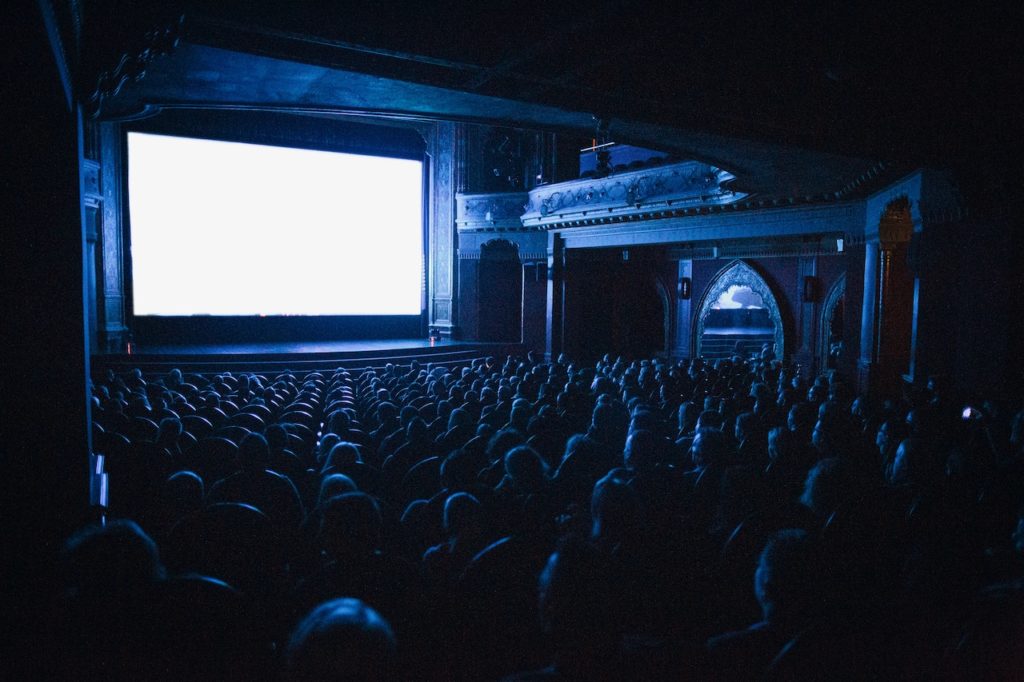M+E Connections

Great Films Flooding Every Screen
Story Highlights
Life has returned to normal – the old normal and the new normal.
The old normal? Just ask the Academy about their theatrical requirements. Want a shot at a statue? Show your film in a theater … lots of them!
The Academy better plan on giving out two special Oscars to people who forced folks back into the theater. Before this year, the last time we had our seat in one of their seats was probably 2009. Before that, we think it was 1986.
So, they better set aside statues for Tom Cruise and James Cameron because their releases this year forced us to buy their popcorn.
The new normal? Choosing the right screen to watch a project based on its content and creative effort.
We’re not a huge fan of sitting in a movie house when so much good content is available at home, but the only way to experience the Navy jets streaking across a screen and feel the action of the finally released Top Gun: Maverick was the way we enjoyed the first one in 1986.
 Sure, there were several good/great projects slotted to be seen in theaters this year, but few if any A-Listers had the juice to insist on a solid theatrical window and then wring every bit of pre-showing publicity out of the lead-up the way Cruise did.
Sure, there were several good/great projects slotted to be seen in theaters this year, but few if any A-Listers had the juice to insist on a solid theatrical window and then wring every bit of pre-showing publicity out of the lead-up the way Cruise did.
He delivered–for folks involved in the project, for his fans, for theater owners, for Paramount and for the film creation industry around the globe.
We had long given up on having a second reason to visit the IMAX again because Cameron kept shifting dates for Avatar. Then he became enthralled with deep oceanography – breaking records diving 6.8 miles to the bottom of the Mariana Trench – and we figured another Pandora visit was off the table.
It turns out he was just waiting for 3D production technology to get to the point where he could deliver what he calls a “must-see experience at the cinema.”
3D immersion without the stupid glasses could be just the kind of experience people of all ages are looking for.
They’re okay for our kids, but we’re just not interested in going to the cinema for another Star Wars, Star Trek, Marvel, or DC superhero flick. Those will be just as good streamed to our big home screen.
But to really “feel” Pandora, we know not watching/experiencing it in a controlled, communal environment just wouldn’t be the same.
If it meets our wildest expectations, we’ll have a reason to go to the cinema when the next chapters come out.
Just hope Hollywood and movie houses don’t jump the 3D shark like they did last time and force the use of the format where the story doesn’t dictate.
We understand but …
At a very basic level, we appreciate that people who create, produce and post films want to see their projects on the ultra-large screen.
Most of it is good, some of it even great but the truth is the vast majority is just as entertaining if it’s viewed on the home or computer screen. We do draw the line at films on smartphone screens but for many people around the globe, it’s the only choice they have.
It’s been nearly two years of on again, off again, maybe, yes and no uncertainty as to whether 200,000 plus cinema screens would be able to show films.
It’s no surprise that studios were more than ready to ramp up their marketing machines to get their part of the consumers out-of-home entertainment budget.
Studios don’t take any chances.
They want individuals and families to discard their stay-at-home viewing habit and once again return to the cinema.
You’ve probably noticed that the really big budget films have been advertised on TV.
In addition, they’ve been putting clips, teasers, trailers, stills, quotes on YouTube, TikTok, Instagram, Snapchat and any/all social media platforms they can find.
Everyone is trying everything possible to rekindle the theatrical experience.
They have to since there’s a tremendous backlog films sitting on studio shelves that CFOs would like turn into profit.
Much to movie house owners’ glee, there’s a new flick ready to be shown at your favorite movie house for the foreseeable future.
The overabundance of ready-to-show films and the need for positive marketing has also been why some people think that piracy by BitTorrent and other sites is actually good for box office totals.
 In fact, two academic researchers – meaning it’s not their money – came up with the brilliant conclusion that a few quality copies being viewed around the globe free of charge actually increases global box office sales.
In fact, two academic researchers – meaning it’s not their money – came up with the brilliant conclusion that a few quality copies being viewed around the globe free of charge actually increases global box office sales.
We can only guess that they would also find that people who steal mountains of goods from your local retail store is actually good for the store’s business because ordinary folks will want to rush to stores and buy the same stuff.
But the truth, according to Stephen Follows’ in-depth analysis is that it is tough – darn tough – for movies to be profitable.
According to the latest report from the MPA (Motion Picture Association), the theatrical/home entertainment industry (movie theaters and streaming) racked up nearly $100B last year and could increase by 20 + percent by the end of this year.
Fellows noted that movie houses drive most of the income for films but not profits since studios only receive an average of 50 percent of box office gross.
They also pay all of the movies’ marketing costs out of their share.
More than half of the video stories show a profit from cinema showings and if it weren’t for the ultra-creativity of the studios’ finance people, movie houses would be closed … forever.
Yeah … they’re that good!
Back before 2019, China used to be the second largest theatrical market for Hollywood’s stuff; but locally produced content got better, folks liked seeing someone like themselves on the screen and the government placed tighter restrictions on what movies appeared in Chinese theaters. Every country has its own guidelines.
With everything changing, studios had to expand how they make money – cinema release, project merchandise (think Disney), disc sales, streaming (Disney +, WDB’s HBO, Paramount +, Amazon, Netflix, Apple TV, etc.), pay TV, airline releases, AVOD (Tubi, Freevee, Pluto, etc.).
The options were looking better than the theatrical release. It’s a good thing since Bruce Nash, of Nash Information Services, has shown for years (since 1997) that theater ticket sales have steadily dropped year over year since 2002.
Despite that, theater chains racked up record profits simply by raising prices on tickets and concessions.
While theater owners will have to make a lot of changes in the way they operate and treat customers, movie houses are still a gathering place for people to go to escape into a neat, breathtaking, exciting, horrifying, funny, sad, enlightening and just plain different world for a few hours.
Even though most projects don’t have the aspirations (and budgets) to target everyone as Cameron’s films do, every filmmaker wants to see her/his visual story shared by the broadest segment of folks possible.
 Most filmmakers focus on appealing to the sweet spot of the moviegoer market – 12-39 years of age. These are the people who buy 52-plus percent of the tickets sold and are the most ardent/frequent film viewers.
Most filmmakers focus on appealing to the sweet spot of the moviegoer market – 12-39 years of age. These are the people who buy 52-plus percent of the tickets sold and are the most ardent/frequent film viewers.
As for the rest of the movie viewing market, there are still plenty of opportunities to capture eyeballs. The people who don’t regularly go to the cinema today, seldom – if ever – went before. They were (and are) satisfied watching stuff at home on their own screen.
It’s a lot less work than getting dressed for the evening, driving 5-10 miles to sit with a bunch of strangers, driving home and saying, “Gawd that was fun!”
Only about two-fifths (42 percent) of Gen Zers plan on making the theater a regular part of their entertainment budget but that’s about the same as it was back in the “good ol days” of the cinema business when we simply had to watch Maverick in action and visit Pandora the last time.
There are only a few creatives who know how to develop work that takes maximum advantage of IMAX and 3D and have the industry clout to force studios to commit to projects like that.
In addition, they have to have one helluva storyline to deliver.
Most of the work isn’t screen dependent. It’s just good and satisfying no matter where folks watch it. Maverick was good and we’re pretty sure Cameron’s work will be good; but honestly, we just can’t imagine ourselves repeating Nate Drake’s comment in Uncharted when he said, “I’ve been waiting to do this my entire life!”
If we did, there would probably be no reason to go back to the theater … ever.
Andy Marken [email protected] is an author of more than 700 articles on management, marketing, communications, industry trends in media and entertainment, consumer electronics, software, and applications.









